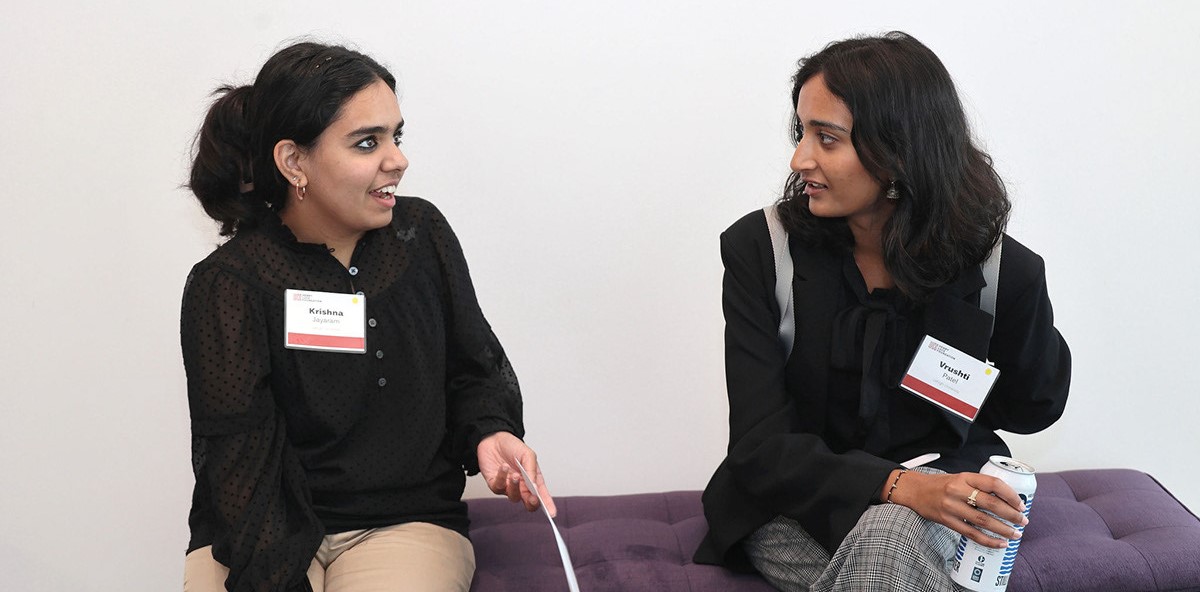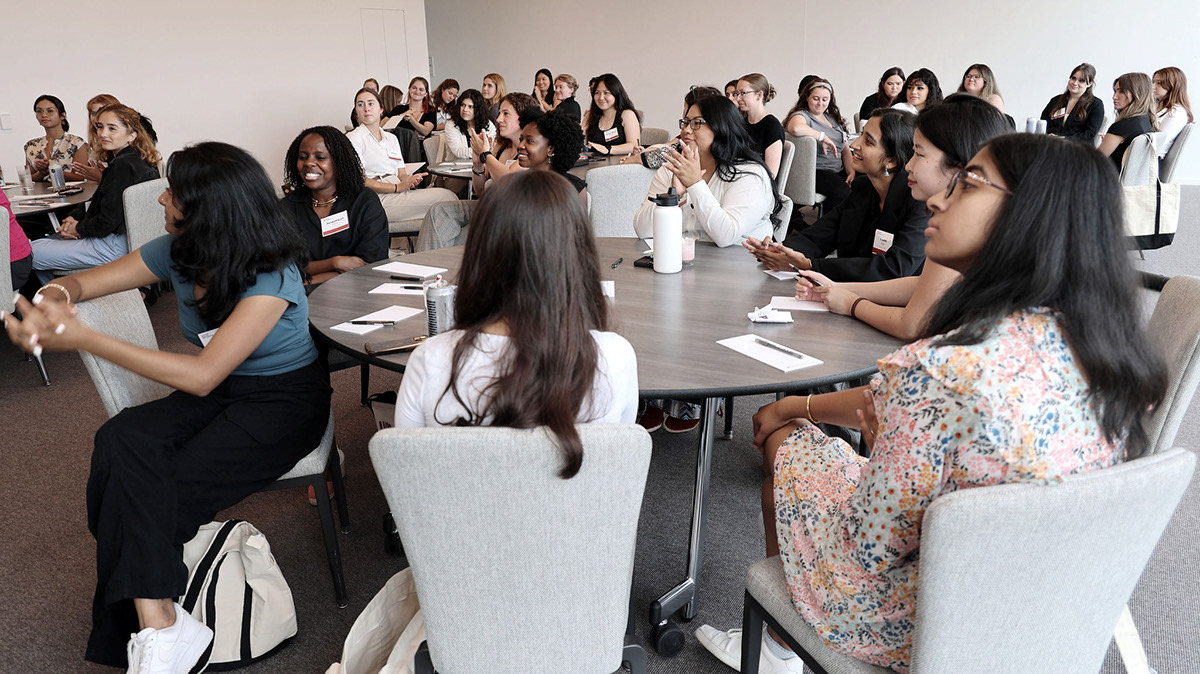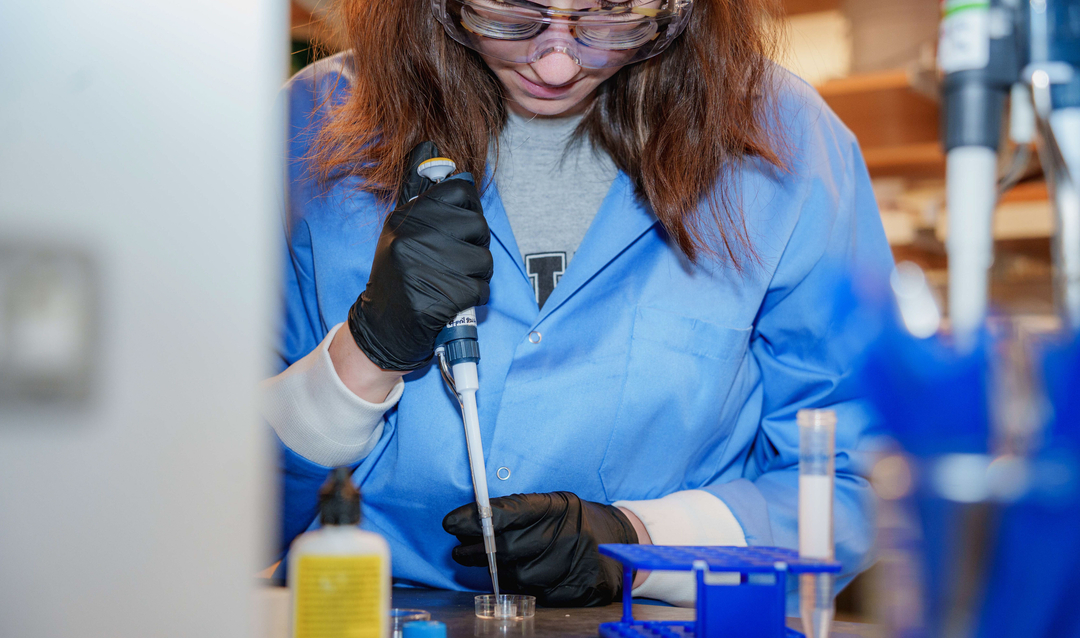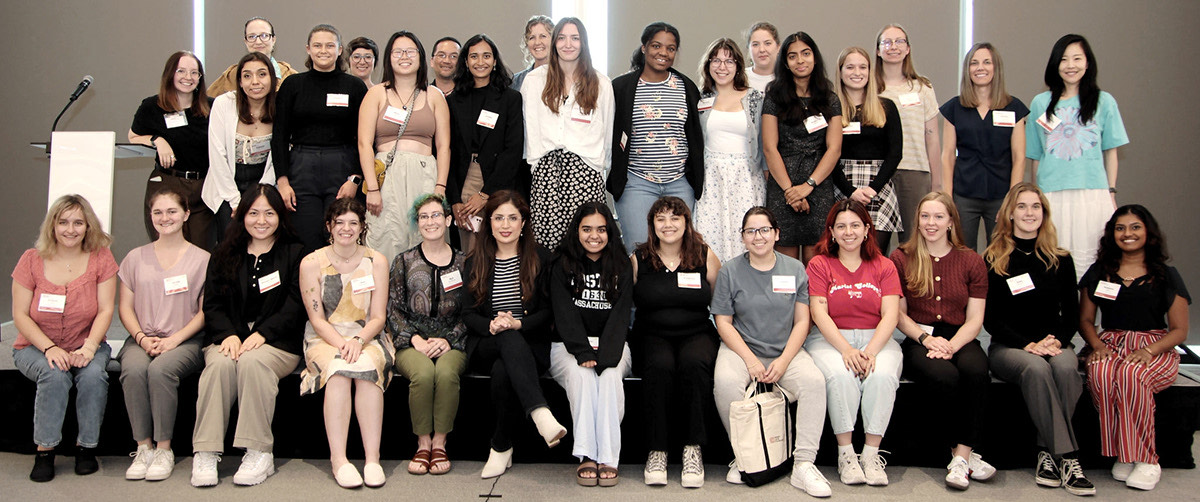
For Krishna Jayaram ’26, research brings classroom concepts to life.
“This feels very real,” says the junior bioengineering major. “I went from learning about biology and genetics in class to actually doing it.”
Jayaram is a Clare Boothe Luce Research Scholar. Through the CBL program, which provides a two-year opportunity for high-achieving undergraduate women engineering students to collaborate with faculty mentors on meaningful research, she has been working with Tomas Gonzalez-Fernandez, an assistant professor of bioengineering, since her first collegiate summer.
In class, she has learned about anatomy and physiology from Professor Gonzalez-Fernandez. Under his guidance in the lab, she has been researching tissue engineering and regenerative medicine, with a specific focus on the joint-weakening disease osteoarthritis.
Jayaram says their goal is to better understand the effects of the disease and the inflammation it causes within the body, so they can replicate those conditions in the lab and administer different therapies and evaluate their effectiveness. Currently, they are developing an implantable scaffold to control the release of a specific anti-inflammatory drug, ensuring it remains localized in areas of inflammation rather than spreading throughout the body.
“I really enjoy working with Professor Gonzalez-Fernandez. He is the type of professor to give you tough love but also to build you up as a person,” she says. He’s teaching her not only the science and skills she’ll need to achieve her goal of a career in prosthetics but also what it’s like to be an engineer in the real world, she adds. “I’ve gained a lot of confidence from him.”
Building skills and connections
 Professional development and cultivating so-called soft skills are integral parts of the CBL program, which also provides funding for conferences and workshops. This past summer, Jayaram and fellow CBL Research Scholar Vrushti Patel ’26 attended the Clare Boothe Luce Program Women in STEM Conference in Chicago.
Professional development and cultivating so-called soft skills are integral parts of the CBL program, which also provides funding for conferences and workshops. This past summer, Jayaram and fellow CBL Research Scholar Vrushti Patel ’26 attended the Clare Boothe Luce Program Women in STEM Conference in Chicago.
The three-day event featured panel discussions with leaders in STEM fields, professional development workshops, and networking activities with colleagues and students from other institutions that participate in the CBL Program.
Jayaram and Patel listened to several panelists reflect on their career journeys, and the pair shared their own experiences, accomplishments, and struggles in workshop sessions that focused on personal identity, going beyond the label of “women in STEM.”
In one workshop, they were asked to write two biographical abstracts, one that was hypothetically for a magazine with a teenage audience and one that was for a hypothetical research fund to practice crafting a message that resonates with the intended audience
“It was really interesting to see how people described their personality and hobbies more in the magazine abstract, but kept the research abstract very academic-oriented,” Jayaram says.
Striving for social impact
For Patel, a junior majoring in Computer Science and Business with minors in data science and global studies, the CBL program is a step toward her goal of using technical skills to make a positive social impact.
Her research, under the direction of Maryam Rahnemoonfar, an associate professor of computer science and engineering with a joint appointment in the Department of Civil and Environmental Engineering, involves revitalizing and preserving endangered languages using natural language processing and machine narrating.
“I joined Professor Rahnemoonfar’s lab in my first year, and it has been interesting learning from other research teams and applying it to my own research,” says Patel, who traces her interest in computer science back to her sophomore year of high school when she visited India and took one-on-one summer classes with an industry professional. “I want to learn these technologies to benefit the communities I am part of.”
Their research project focuses on the Cherokee language, which has only 2,000 or so fluent first-language speakers and is considered endangered. Cherokee is not available on Google Translate, so they are gathering data to train a Cherokee-to-English translation model.
That data, however, is scarce, and the translation models that Rahnemoonfar and Patel are training require a lot of data to be able to function properly.
“Right now the data we have is mostly from translations of the Bible,” says Patel, “so the English is an older style and the translations that result from the model reflect that.”
Patel is following multiple approaches to extract data. One method uses optical character recognition (OCR), a digital tool that scans documents and extracts text. Another strategy involves generating synthetic data by starting with existing monolingual Cherokee data and running it through an English translation model they have trained.
She is also working on a related project that harnesses artificial intelligence in a visual approach: creating picture books for children.
“If you are trying to revitalize and preserve a language, you must start with the youth,” says Patel. “They are the main demographic we want to focus on, so we are trying to create children’s books using AI image generation.”
—Andrea Palladino ’26 is a student writer for the P.C. Rossin College of Engineering and Applied Science




